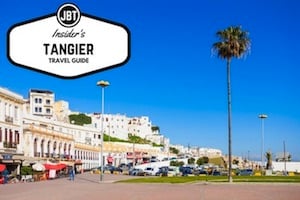 The Rif Mountains may not have the high peaks of the Toubkal region or the dramatic gorges of the Anti-Atlas Mountains, but Morocco’s northernmost mountain range offers some laid back trekking and views of the azure Mediterranean.
The Rif Mountains may not have the high peaks of the Toubkal region or the dramatic gorges of the Anti-Atlas Mountains, but Morocco’s northernmost mountain range offers some laid back trekking and views of the azure Mediterranean.
When to Go
The best time to visit the Rif is during the spring from late March through June. The summer months can get unpleasantly hot during the day if you plan on doing any hiking or trekking, and the winter months from November to March can be quite cold. Weather from August to October is excellent, but locals are busy with the regional kif (marijuana) harvest and it can be more difficult to find onward transportation.
Where to Visit
The base for exploring the Rif Mountains is Chefchaouen. Referred to simply as “Chaouen” (sha-wen) by locals, the town’s name means “peaks.” Even if you’re not into hiking, you can enjoy mountain views from the town square or from your hotel’s rooftop.
Accommodation and restaurant offerings cater mostly toward a backpacker/budget market. For upscale options, check out Hotel Parador or Casa Hassan.
What to Do
In town, wander around checking out the distinct white and blue architecture; keep your eye out for exquisitely carved wooden doors. Bargain for blankets in the medina or pick up a hand-knit scarf or hat. Locally made pillowcases come in vibrant regional colors and make inexpensive, lightweight gifts to bring home.
A moderately challenging day hike with good views is from Chefchaouen town to the limestone rocks at Sfiha Telj. You can stop for lunch at Ain Tissimlane spring or at the campsite just below the sprawling, jagged rocks of Sfiha Telj. The hike is steep; start early if you plan to do the trip round trip in one day. Plan to camp overnight if you’d like to walk at a more leisurely pace.
Considerations
Chefchaouen is a hilly town. Lanes within the town aren’t paved and are bumpy; travel in the Rif region would not be suitable for mobility-impaired visitors.
Selling and exporting kif is one of the region’s largest economic activities. Don’t be surprised if you’re offered some while walking down the street, riding in a taxi or checking into a backpacker hotel. If you smoke it, beware, as different crops have different potency levels. It’s illegal for foreigners to take kif outside the country. If you plan to cross the border into Spanish Melilla after your trip in the Rif, you may have the pleasure of experiencing a full cavity search. Don’t attempt to bring kif with you into Spain; the border guards will find it.
Written by Heather Carreiro.
Photo by gavinkwhite.









Good infographic. Thanks for sharing